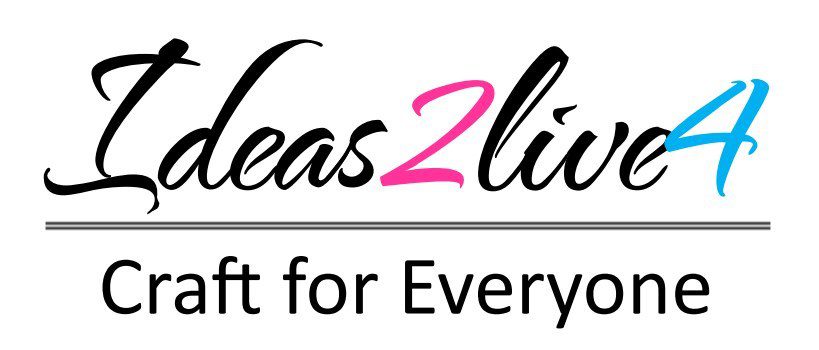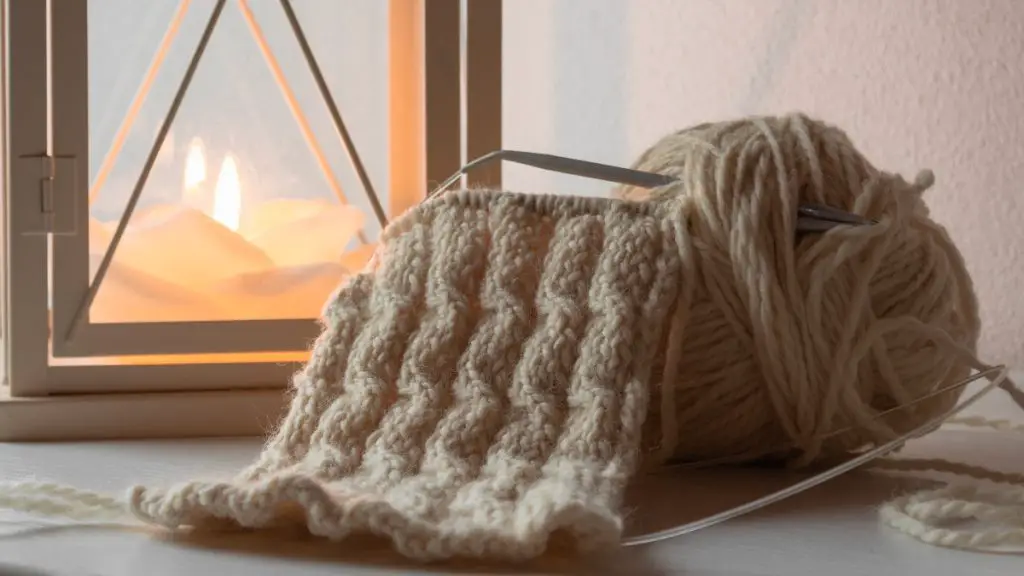Crochet patterns open a world of creative possibilities. This article explores how to master complex stitch techniques in crochet patterns. We provide a comprehensive guide for crocheters at all levels. The aim is to enhance your skills and inspire your next crochet project.
Contents
- 1 Basics of Crochet Patterns
- 2 Essential Tools for Crochet Patterns
- 3 Exploring Intricate Stitch Techniques
- 3.1 Single Crochet Increase and Decrease
- 3.2 Double Crochet Clusters
- 3.3 Front and Back Post Stitches
- 3.4 Shell and Fan Stitches
- 3.5 Popcorn and Bobble Stitches
- 3.6 Cable Stitches in Crochet
- 3.7 Lace Patterns and Openwork
- 3.8 Working with Color Changes
- 3.9 Joining Techniques for Complex Patterns
- 3.10 Innovative Edging and Border Techniques
- 4 Advanced Crochet Patterns and Techniques
- 5 Project Ideas for Practicing Intricate Crochet Patterns
- 6 FAQ on Crochet Patterns Techniques
- 6.1 What are the best yarn types for intricate crochet patterns?
- 6.2 How do I choose the right hook size for my crochet pattern?
- 6.3 Can beginners attempt intricate crochet patterns?
- 6.4 How do I keep my tension consistent in crochet patterns?
- 6.5 What’s the best way to learn new stitches for crochet patterns?
- 6.6 How do I fix mistakes in my crochet pattern?
- 6.7 Are there any tools to help with intricate crochet patterns?
- 6.8 How do I read and follow complex crochet pattern diagrams?
- 7 Conclusion
Basics of Crochet Patterns
A solid grasp of the basics is crucial to creating crochet patterns. This section covers the foundational aspects of crochet patterns. We’ll look at essential techniques, tools, and the art of reading patterns. These elements form the building blocks for all crochet projects.
Overview of Crochet Techniques
Before diving into complex patterns, understanding basic crochet techniques is vital. It includes learning to hold the yarn and hook, making a slip knot, and creating a foundation chain. Mastery of these basic steps is essential for any crochet pattern.
Reading and Interpreting Pattern Symbols and Abbreviations
Crochet patterns often come with a unique language of symbols and abbreviations. Learning to interpret these is vital for following and creating designs. It includes understanding common abbreviations like ch (chain), sc (single crochet), and dc (double crochet). Familiarity with these terms makes it easier to navigate through various crochet patterns.
Essential Tools for Crochet Patterns
Selecting the right tools is pivotal in your crochet journey. The tools you choose can greatly influence the outcome and enjoyment of your projects. Here, we delve deeper into the essential tools for crochet patterns and their roles.
Crochet Hooks
Crochet hooks come in various sizes and materials. The size of the hook directly affects the size of the stitches and the overall texture of the crochet pattern. Smaller hooks are typically used for finer, more detailed work, while larger hooks suit bulkier yarns for quicker projects.
Materials like aluminum, plastic, and bamboo offer different experiences. For instance, bamboo hooks are warm and lightweight, ideal for those with joint pain, while aluminum hooks are smooth, durable, and suitable for faster crocheting.
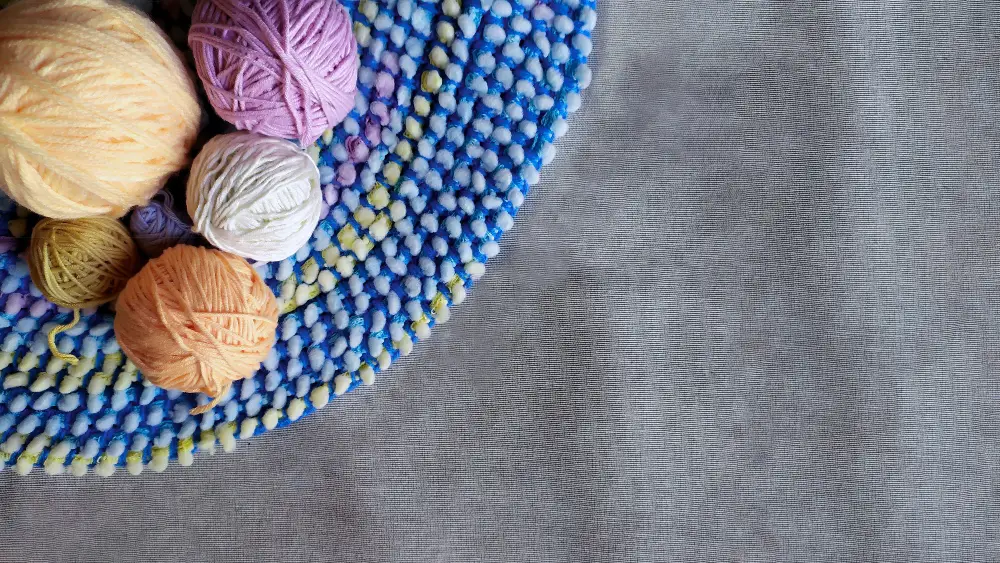
Yarn
Yarn choice is crucial in crochet patterns. The weight, fiber content, and color of the yarn can dramatically change the look and feel of a project. Lighter yarns, like cotton or acrylic, are great for summer wear and delicate patterns, whereas heavier wool or chunky yarns are perfect for warm winter items. The yarn’s color and texture also play a significant role in the aesthetic of the crochet pattern.
Stitch Markers
Stitch markers are small markers that help keep track of specific stitches in a pattern. They are instrumental in complex crochet patterns where counting stitches or rounds is critical. Stitch markers can be simple plastic rings, fancy metal clips, or makeshift items like safety pins.
Yarn Needle
A yarn or tapestry needle is a large, blunt needle used to weave in yarn ends after a crochet pattern. This tool is essential for giving your project a finished, professional look. Yarn needles come in various sizes and materials. Choosing the right one depends on the yarn weight and the intricacy of your crochet pattern.
Understanding how these tools interact with your crochet pattern is critical to selecting the right ones for your project. You can confidently embark on your crochet journey with the correct tools, knowing you can tackle any crochet pattern.
Exploring Intricate Stitch Techniques
This section will expand your skill set and introduce you to various complex stitches. These techniques will add texture, depth, and sophistication to your crochet patterns.
Single Crochet Increase and Decrease
Single Crochet Increase (sc inc):
Increasing crochet patterns allows you to shape your work. The single crochet increase involves making two single crochet stitches in the same stitch. This technique is often used in crochet patterns requiring gradual expansion, like hats or amigurumi.
- To execute, insert the hook into the stitch, yarn over, and pull up a loop.
- Yarn over again and draw through both loops on the hook. It completes one single crochet.
- Repeat the process in the same stitch. This creates an increase.
Single Crochet Decrease (sc dec):
Conversely, the single crochet decrease is used to taper crochet patterns. It is achieved by combining two stitches into one.
- Start by inserting the hook into the next stitch and pull up a loop.
- Instead of completing the stitch, insert the hook into the next stitch and pull up another loop.
- Yarn over and draw through all three loops on the hook. The loops form a single crochet decrease.
Double Crochet Clusters
Double crochet clusters create a textured, dense fabric that adds visual interest to crochet patterns. This technique involves partially completing several double crochets and then joining them together.
- Begin by yarning over and inserting the hook into the stitch.
- Yarn over again and pull up a loop, then yarn over and pull through the first two loops on the hook. Leave the remaining loop on the hook.
- Repeat this process for the desired number of double crochets in the cluster.
- Once the last double crochet is partially completed, yarn over and draw through all the loops on the hook.
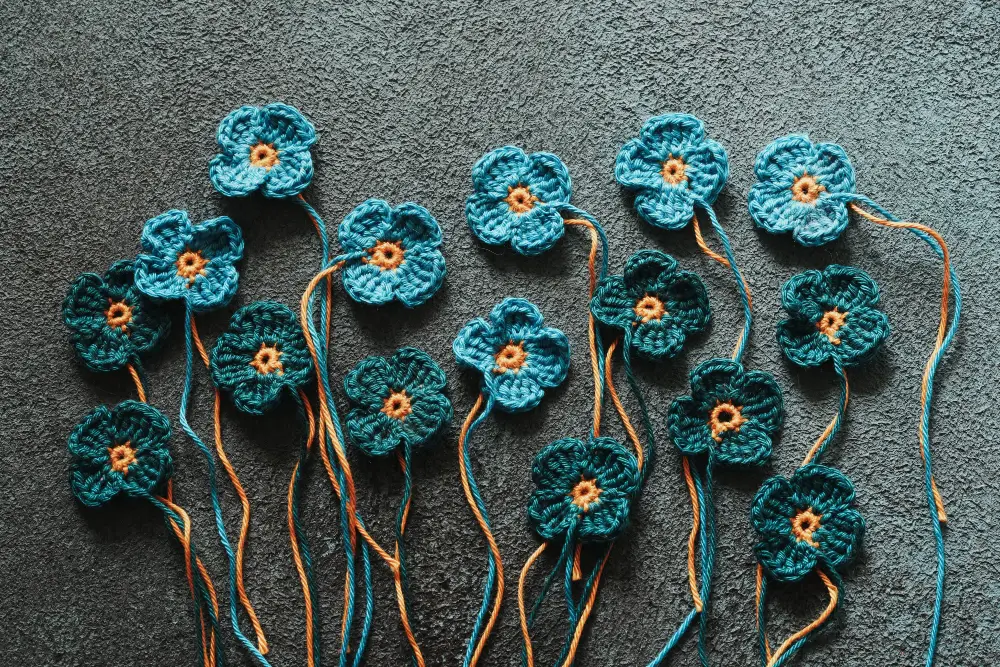
Front and Back Post Stitches
Front Post Stitches (FP):
Front post stitches add texture and relief patterns to crochet projects. These stitches are worked around the post of the stitch from the previous row instead of into the top loops.
- To create a front post double crochet (FPdc), yarn over and insert the hook from the front to the back and then to the front around the post of the corresponding stitch below.
- Complete the stitch as a regular double crochet.
- This technique pulls the stitch forward, creating a raised effect on the fabric’s surface.
Back Post Stitches (BP):
Back post stitches are the opposite of front post stitches, creating an embossed effect on the back side of the fabric.
- For a back post double crochet (BPdc), yarn over and insert the hook from the back to the front and then to the back around the post of the stitch below.
- Complete the double crochet as usual.
- This method pushes the stitch to the back, creating a raised texture on the reverse side of the crochet pattern.
Shell and Fan Stitches
Shell Stitches:
Shell stitches create a delicate, scalloped border or a dense fabric with a series of tall stitches in the same stitch.
- Work five double crochets into the same stitch to make a basic shell stitch.
- This forms a fan-like or shell-like shape, hence the name.
- Shell stitches are versatile and can be adjusted in size and fullness, making them popular in various crochet patterns, especially in edgings and decorative motifs.
Fan Stitches:
Fan stitches are similar to shell stitches but often involve a combination of different stitches and chains to create a more open, fan-like structure.
- A simple fan stitch might include a series of double crochets separated by chain spaces, worked into the same base stitch.
- This creates a more open and airy pattern than the denser shell stitch.
- Fan stitches are ideal for creating lacy patterns in shawls, blankets, and garments in crochet patterns.
Both shell and fan stitches are excellent for adding texture and visual interest to crochet patterns, providing a creative way to enhance the aesthetic appeal of your projects.
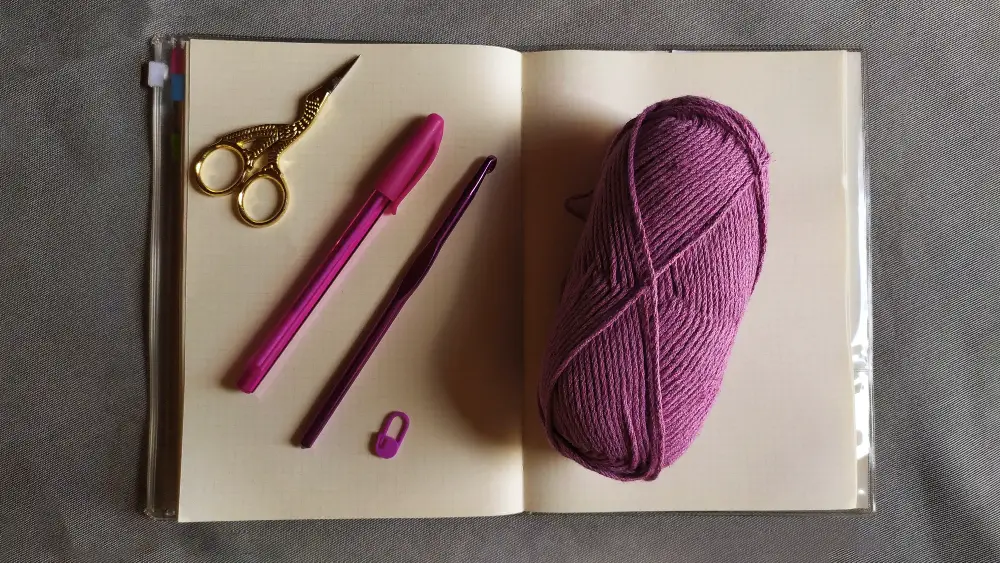
Popcorn and Bobble Stitches
Popcorn Stitches:
Popcorn stitches create a pronounced, textured bump in crochet patterns. They are ideal for adding dimension to your work.
- Make five double crochets (or the number specified in your pattern) into the same stitch.
- Remove the hook from the loop of the last double crochet and insert it into the top of the first double crochet made.
- Pick the dropped loop with your hook and pull it through the first double crochet.
Bobble Stitches
Bobble stitches are similar to popcorn stitches but are worked on the wrong side of the fabric.
- Yarn over and insert the hook into the stitch.
- Yarn over again and pull up a loop.
- Yarn over and draw through the first two loops on the hook. Repeat steps 1 to 3 until you have the number of incomplete stitches required (usually four or five).
- Yarn over and pull through all the loops on the hook.
- Secure the bobble with a chain stitch.
Cable Stitches in Crochet
Cable stitches in crochet patterns mimic the twisted patterns often seen in knitted fabric.
- Start by working a front post double crochet (FPdc) around the desired stitch two rows below.
- Skip the stitch behind the FPdc and work a double crochet in the next stitch.
- Work another FPdc around the skipped stitch, crossing behind the first FPdc.
- Work a series of FPdcs for more complex cables, crossing them in various patterns to create twists and turns.
Lace Patterns and Openwork
Creating Lace Patterns:
Lace crochet patterns combine stitches and spaces to create delicate and intricate designs.
- Start by making a foundation chain of the required length.
- Work a row of single or double crochets, depending on the pattern.
- Begin the lace pattern by alternating between chain spaces and stitches. For instance, chain three, skip two stitches, then single or double crochet in the next stitch.
- Continue this pattern, following the specific design of your lace pattern. This often involves creating clusters or shells to form the lace design.
- Pay attention to the gauge and tension, as lace patterns can vary greatly in appearance based on how tight or loose the stitches are.
Openwork Techniques:
Openwork involves creating patterns with open spaces, similar to lace, but often with larger, more geometric designs.
- Like lace patterns, start with a foundation chain.
- Work a series of chain spaces and stitches to create openwork. This might include larger chain loops, skipped stitches, or treble crochets to create open spaces.
- Follow the pattern to ensure that the open spaces form a cohesive design.
- Openwork is often used in shawls, scarves, and blankets, providing a lightweight and airy fabric.
Working with Color Changes
Changing Colors in Crochet Patterns:
Introducing new colors can add depth and interest to crochet patterns.
- To change colors, start the last stitch of the current color but do not complete it. You’ll have two loops on the hook.
- Join the new color by drawing it through the two loops on the hook.
- Continue crocheting with the new color according to your pattern.
- To ensure a neat transition, manage your yarn tails by either weaving them in as you go or leaving them to be woven in at the end.
Tips for Multi-Color Crochet Patterns:
Working with multiple colors can be challenging but rewarding.
- Plan your color changes to minimize tangling and to ensure a cohesive color scheme.
- Carry the unused color along the row or cut and rejoin it as needed. This decision depends on the pattern and the distance between color changes.
- Keep tension even when changing colors to avoid puckering in the fabric.
- Practice makes perfect. Experiment with different color-changing techniques to find what works best for your crochet patterns.

Joining Techniques for Complex Patterns
Seaming with Slip Stitch:
This method provides a flat, nearly invisible seam for joining complex crochet patterns.
- Place the pieces to be joined side by side, right sides facing up.
- Insert the hook through both layers of the first stitches.
- Yarn over and pull through all loops on the hook. This creates a slip stitch.
- Continue this process along the edge to be joined.
- The slip stitch method is particularly useful for motifs or squares in complex patterns.
Whip Stitch Joining:
A whip stitch creates a sturdy and simple seam for joining pieces.
- Align the pieces with the wrong sides together.
- Thread a yarn needle with a length of yarn.
- Insert the needle through both pieces, working from the back to the front.
- Continue this stitch evenly along the edges.
- The whip stitch is great for joining heavier or more textured crochet patterns.
Innovative Edging and Border Techniques
Picot Edging:
Picot edging adds a delicate, decorative finish to crochet patterns.
- Work to the point in the edge where you want a picot.
- Chain three (or the number specified in your pattern), then slip stitch into the first of these chain stitches.
- Continue with your edging pattern, repeating the picot at regular intervals.
- This technique creates small loops along the edge, perfect for a sophisticated finish.
Crab Stitch (Reverse Single Crochet):
The crab stitch provides a firm, rope-like edge and is worked in reverse.
- Instead of working from right to left, work from left to right.
- Insert the hook into the stitch to the right, yarn over, and pull up a loop.
- Yarn over again and draw through both loops on the hook.
- Continue this technique along the edge for a sturdy and attractive finish.
Advanced Crochet Patterns and Techniques
This section is dedicated to those ready to advance their skills. These advanced crochet patterns enhance your crafting repertoire and allow you to create truly stunning and sophisticated pieces.
Intricate Filet Crochet Patterns
Filet crochet is a technique that uses mesh and solid stitches to create intricate graphic designs in crochet patterns. It’s perfect for delicate projects like doilies, table runners, and curtains.
Starting with a Basic Mesh:
- Begin by making a foundation chain; the number of chains will depend on your pattern.
- Double crochet in the fourth chain from the hook, chain one, skip a chain, and double crochet in the next. Repeat this across the row.
- This creates the open mesh, the basic building block of filet crochet patterns.
Forming Solid Blocks:
- Make a double crochet in each stitch to create a solid block instead of chaining and skipping a stitch.
- This technique allows you to fill in mesh parts, creating diverse designs and images in your crochet patterns.
Reading Filet Crochet Charts:
- Filet crochet patterns are often presented in chart form, with filled and unfilled squares representing solid blocks and open meshes.
- Follow the chart row by row to create the desired design.
Advanced Tunisian Crochet Techniques
Tunisian crochet, also known as Afghan crochet, combines elements of knitting and crochet for unique, intricate crochet patterns. It’s known for its dense, woven-like fabric.
Tunisian Simple Stitch (TSS):
- Start with a foundation chain.
- Insert the hook into the second chain from the hook, yarn over, and pull up a loop.
- Keep the loop on the hook and repeat in each chain across.
- Work off the loops in a return pass, similar to knitting.
Tunisian Knit Stitch (TKS):
- Insert the hook between the stitch’s front and back vertical bars below instead of into the chain.
- This creates a stitch that resembles a knit stitch in knitting, adding texture and interest to your crochet patterns.
Sophisticated Overlay Crochet Patterns
Overlay crochet involves working multiple layers of stitches to create a textured, 3D effect in crochet patterns. This technique perfectly creates intricate mandalas, decorative items, and detailed motifs.
Starting with a Base Layer:
- Begin with a simple crochet pattern as your base, often a flat piece like a circle or square.
- Use basic stitches like single crochet or double crochet for this layer.
Adding Layers for Texture:
- Work additional layers of stitches on top of the base layer.
- Use a variety of stitches, like front post or long stitches, to create raised effects.
- Follow the crochet pattern to place these stitches, strategically building the texture and design.
Color Play in Overlay Crochet:
- Change colors frequently to highlight the textured design.
- Each layer or round in the crochet pattern can be a different color, emphasizing the overlay effect.
Complex Broomstick Lace Techniques
Broomstick or jiffy lace combines crochet with a large knitting needle or dowel to create a unique, lacy fabric in crochet patterns. It’s great for creating airy shawls, scarves, and decorative pieces.
Setting Up the Broomstick Lace Loops:
- Start with a row of single crochet or other basic stitches.
- Pull a large loop from each stitch onto a knitting needle or dowel.
- The size of the needle/dowel determines the size of the loops and, thus, the laciness of the pattern.
Working the Broomstick Lace Stitches:
- Remove a group of loops from the needle/dowel.
- Using a crochet hook, work a series of single crochets or other stitches around these loops.
- This secures the large loops and creates the characteristic look of the broomstick lace.
Combining Broomstick Lace with Other Stitches:
- Integrate other crochet stitches and techniques between the rows of broomstick lace for complex designs.
- This can add variety and texture to your crochet patterns.

Irish Lace Crochet and Fine Detailing
Irish Lace Crochet and Fine Detailing
Irish lace crochet, known for its intricate patterns and fine detailing, is a traditional crochet that creates delicate, lace-like fabric. It combines motifs like flowers, leaves, and butterflies with mesh or netting to create elegant designs, perfect for heirloom-quality projects in crochet patterns.
Start with Smaller Motifs:
- Begin by crocheting individual motifs, such as flowers, leaves, or other decorative shapes.
- Use fine crochet thread and a small hook to achieve the delicate nature of these motifs.
- The intricacy of these motifs is a hallmark of Irish lace crochet patterns.
Assembling the Motifs:
- Arrange the crocheted motifs on a fabric background in a pleasing design.
- This layout step is crucial in Irish lace crochet, as it determines the final look of your piece.
Joining Techniques:
- Once satisfied with the layout, join the motifs using fine crochet stitches.
- Techniques like slip stitching or fine chains create a netting effect between the motifs.
- This joining process is meticulous, requiring patience and precision to maintain the elegance and symmetry of the crochet pattern.
Adding Borders and Edgings:
- Complete your Irish lace crochet piece with delicate borders and edgings.
- These are often intricate, involving picot stitches or fine scallops, adding to the overall sophistication of the crochet pattern.
Project Ideas for Practicing Intricate Crochet Patterns
Practicing intricate crochet patterns is essential for skill advancement and creativity. Engaging in various projects allows you to apply and refine your techniques. This section suggests project ideas suitable for all skill levels. These ideas are designed to help you master intricate crochet patterns while creating beautiful, functional pieces.
Scarves and Coasters
Start with simple projects like scarves and coasters. These small-scale works are excellent for practicing basic stitches and simple patterns. A scarf can introduce you to working with different yarns and tension consistency. Coasters offer a platform to try basic motifs and color changes without committing to a larger project.
Hats and Cushion Covers
Once comfortable with the basics, move to hats and cushion covers. These projects allow you to experiment with more complex shapes and joining techniques. Hats can introduce you to working in the round and decreasing, while cushion covers are perfect for trying new stitches and colorwork.
Lace Tablecloths and Amigurumi
For those ready to tackle highly detailed work, lace tablecloths and amigurumi (crocheted stuffed toys) are challenging yet rewarding. A lace tablecloth can encompass advanced techniques, including filet crochet and intricate edging. Amigurumi pushes the limits of shaping and fine detailing in crochet patterns, requiring precision and patience.
Seasonal Decor and Gifts
Seasonal decor items like Christmas ornaments or Easter eggs are great for practicing thematic patterns and techniques. These also make excellent gifts, allowing you to share your love of crochet with others.
Shawls and Sweaters
For a blend of fashion and function, try creating shawls and sweaters. These larger projects can be adorned with sophisticated stitch patterns, lacework, and color changes. They enhance your skills and result in stunning, wearable pieces.
FAQ on Crochet Patterns Techniques
What are the best yarn types for intricate crochet patterns?
The best yarn for intricate crochet patterns depends on the project. For delicate work like lace, choose fine threads like cotton or silk. For textured patterns, wool or acrylic yarns are great. Always consider the yarn’s weight and texture in your pattern.
How do I choose the right hook size for my crochet pattern?
Hook size is critical in crochet patterns. It should match the yarn weight and the desired tightness of your stitches. Generally, the yarn label suggests an appropriate hook size. A smaller hook size may be preferable for tighter, more detailed work.
Can beginners attempt intricate crochet patterns?
Beginners can try intricate crochet patterns, starting with simpler projects. Practice basic stitches and gradually move to more complex patterns. Patience and practice are key.
How do I keep my tension consistent in crochet patterns?
Consistent tension in crochet patterns comes with practice. Hold the yarn and hook comfortably, and avoid changing your grip. Regularly check your work and adjust as needed.
What’s the best way to learn new stitches for crochet patterns?
The best way to learn new stitches for crochet patterns is through tutorials, crochet books, or classes. Practice each new stitch slowly and repeatedly until you’re comfortable.
How do I fix mistakes in my crochet pattern?
To correct problems in your crochet pattern, carefully unravel your work to the point of the error. Then, re-crochet the section correctly. Stitch markers can help you identify where each row or round begins, making spotting and correcting mistakes easier.
Are there any tools to help with intricate crochet patterns?
Tools like stitch markers, row counters, and blocking mats can be very helpful. Stitch markers keep track of pattern repeats or important spots, row counters help keep track of rows or rounds, and blocking mats help shape the final project.
How do I read and follow complex crochet pattern diagrams?
To read complex crochet pattern diagrams, familiarize yourself with the symbols and notation. Practice with simpler diagrams and gradually move to more complex ones. Following written instructions alongside the diagram can also be helpful.
Conclusion
Beginners and experienced crocheters alike can find new techniques to learn and master. Patience and practice are important. Enjoy the process of creating handcrafted items. These tips and techniques set you on a path to becoming a proficient crocheter.
